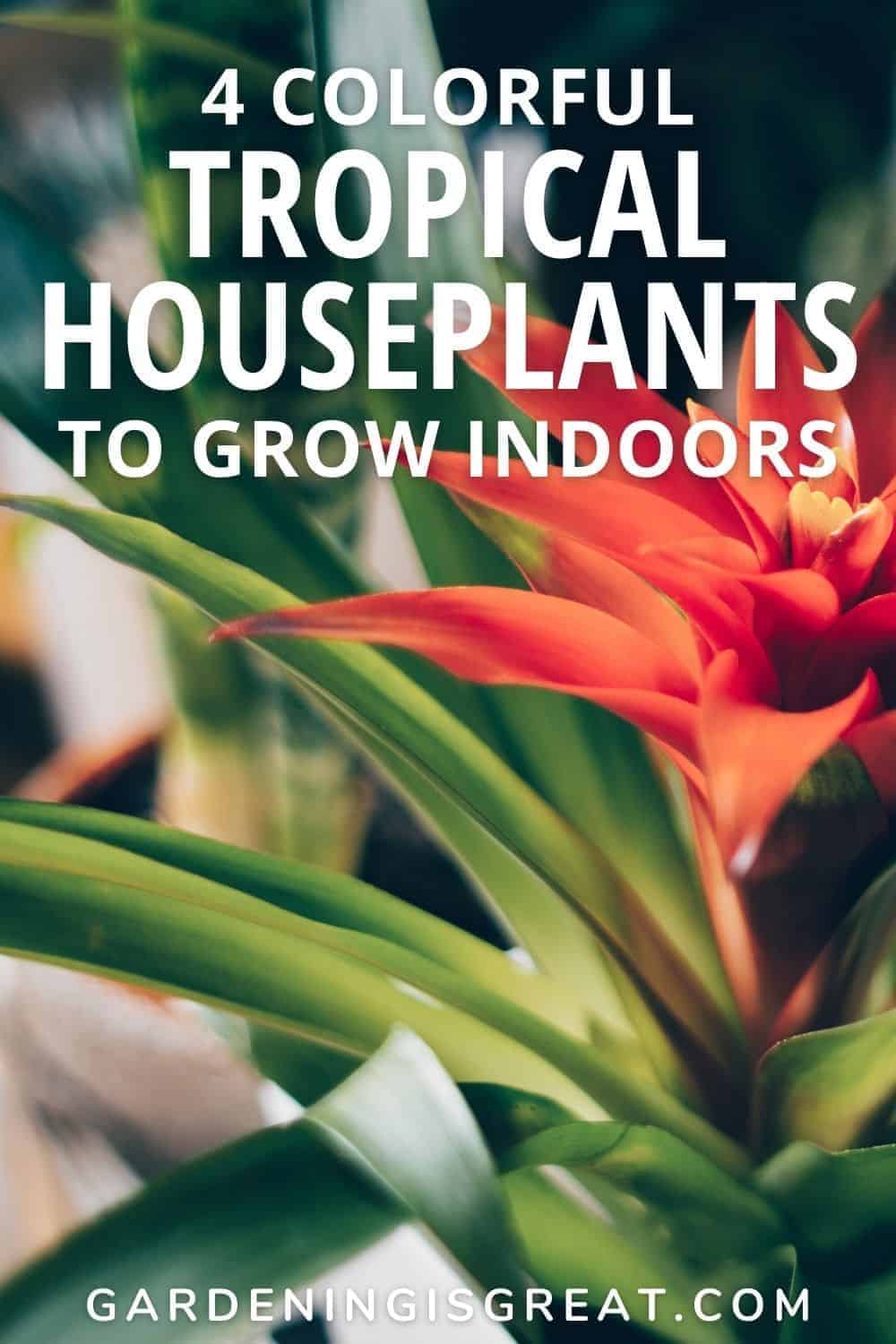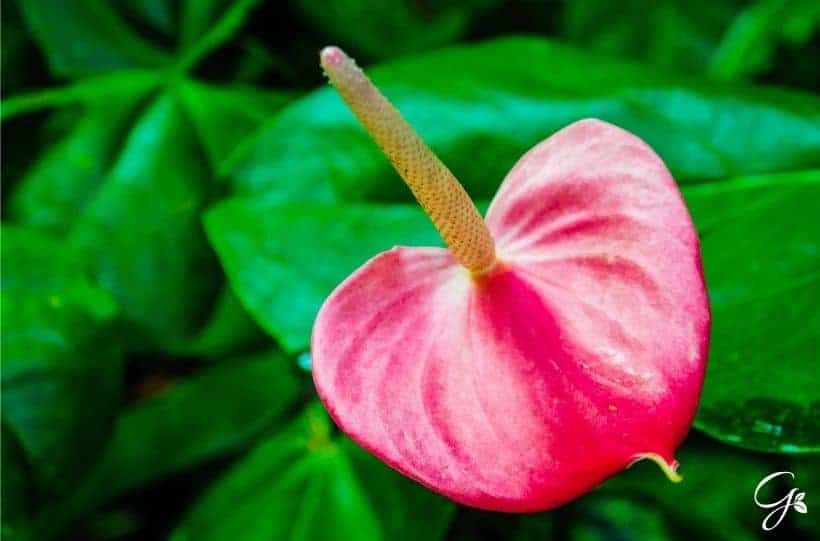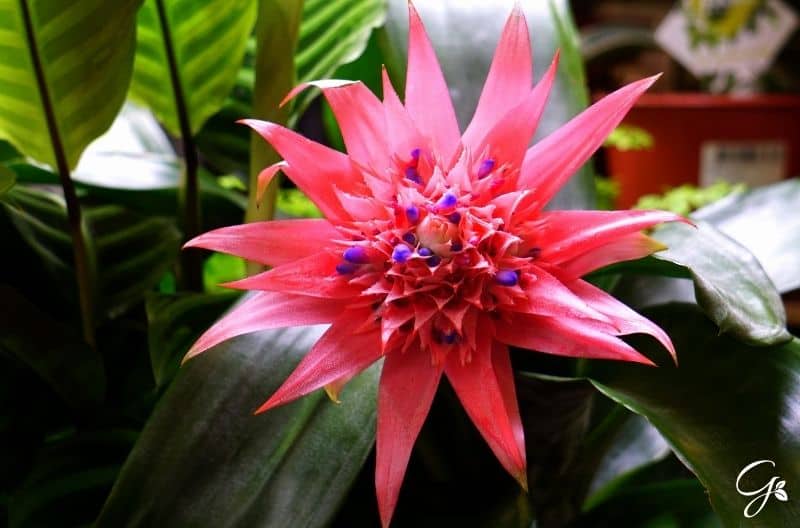4 Colorful Tropical Houseplants To Grow Indoors
Tropical Houseplants aren’t as tricky to grow as they may sound. They are one of the most popular types of houseplants on the market due to their easy maintenance, lush leaves, and brightly colored flowers.
Whether you live in a tropical climate or not will depend upon whether your tropical plants thrive. What does matter, however, is that your plants have access to bright light, a consistently warm temperature, humidity, and the right amount of water.

With the right conditions, you can easily grow tropical houseplants in your home no matter where you are around the world. Here is a list of 4 colorful tropical houseplants you can grow:
Bird of Paradise (Caesalpinia)
There’s no better place to begin our list than with the classic Bird of Paradise plant. This exotic tropical houseplant offers beautiful bright blue and orange flowers that resemble the bird of paradise birds.
Originally from South Africa, the Bird of paradise plant can grow up to 2 meters in height and blooms between winter and spring. Throughout the remainder of the year, it offers large and sturdy deep green foliage.

Though it is particular about its needs, it isn’t tricky to grow. The Bird of paradise plant requires access to bright light, warmth, and humidity. During the spring and summer months, you will need to regularly mist and water your plant to ensure it does not dry out.
Due to its potential growth size, it is best to position it in an area within your home that has space for its leaves and height. As it grows, your plant will need repotting when you can view the roots at the top of the soil.
One thing to keep in mind is that the Bird of paradise plant is toxic to cats and dogs when ingested. If you do have a pet at home, consider selecting one of these pet-friendly houseplants instead.
Anthurium Andraeanum
Also known as the flamingo lily, this beautiful tropical houseplant originates from Columbia and Ecuador. As the name suggests, this plant offers beautiful open lily-like flowers. With a large vibrant pink petal and yellow stamen inside that bloom all year round.

To make the most of this tropical houseplant, they are best grown in an area with lots of indirect sunlight. If placed in an area with less access to light, the plant will produce fewer flowers.
Anthuriums prefer free-draining soil that can be easily created with a mix of half-potting soil and has perlite.
As with many tropical plants, anthuriums also prefer humid conditions and require daily misting. They also need watering around once a week but ensure to check that the top of the soil has dried slightly as anthuriums are susceptible to root rot.
Bromeliad
For a truly exotic feel, consider choosing a bromeliad plant. These unusual tropical houseplants originate from across South America, with the most common type known around the world as pineapple.
Bromeliads, although are flowering tropical houseplants, are mostly well known for their brightly colored bracts. Their bracts grow in the most vibrant of colors with displays of yellows, pinks, oranges, and reds set against their pointed leaves.

In the wild, bromeliads are epiphytes, which means they grow on other plants to position themselves better when competing for light in the rainforests.
Due to this, when grown indoors, they do not require a deep pot to grow in as they collect most of their nutrients through their leaves.
This tropical houseplant requires lots of light, warmth, and humidity. As they are vulnerable to drying out, they need to be placed in water every few days.
After your bromeliad has flowered, don’t be alarmed if it starts to die. Bromeliads are not long-living plants, lasting around 2-3 years, and will die off after flowering. However, they usually produce new plants at the base which can be removed from the original plant and replanted in a new container.
Peace Lily
Similar to Anthuriums, Peace Lilies originate from Colombia and Venezuela. They are a common tropical houseplant due to their ease of care and elegant appearance.

For a softer, colored tropical houseplant, the Peace lily is a good option. With dark, round leaves set against pure white flowers, they complement any indoor space.
Peace Lillies prefer a lower level of light compared to the other tropical houseplants listed. Depending upon how you would like your Peace lily to appear, would depend on where you positioned it within your home.
For brighter, numerous flowers, place your plant in an area with medium to high levels of light. Whereas if you prefer to focus on the deep foliage and less blooming, position your peace lily in an area that has access to low levels of light.
This tropical houseplant is at risk of dying if overwatered. Make sure to check your plant once a week before watering. If the soil has dried, it’s time to add more water.
Unlike many tropical houseplants, peace Lillies may require dividing regularly as they outgrow their containers. When dividing, cut through the middle of the roots and replant each half in its container.
With many tropical houseplants, Peace Lillies also have large leaves that attract dust. At least once a year, the leaves will require wiping with a damp cloth to help them process the sunlight better.
Grow Tropical Houseplants in Your Home
These vibrant tropical houseplants will help to brighten up any indoor space. With the right care in place, they are easy to maintain and grow at home. To ensure your tropical houseplants survive, make sure to:
- Maintain a consistent temperature where you will keep your tropical houseplant
- Carefully position your tropical houseplant in a space that is not susceptible to drafts or near radiators
- Mist your tropical plants to increase the humidity surrounding your plants
- Check the dampness of the soil around your plants before watering
- Repot your tropical houseplants once they outgrow their current pots.
Follow these top tips along with specific growing tips above for each of these 4 tropical houseplants to support your plants to thrive at home.
Take a look at some more of our posts to help inspire you with your houseplant collection:
